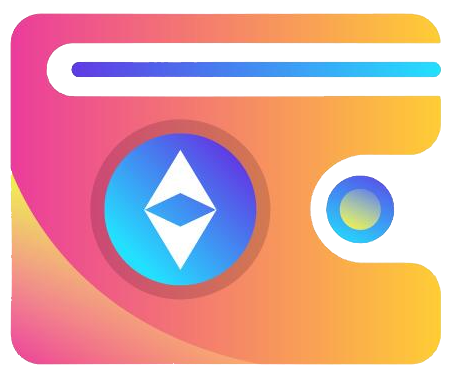Blankos Block Party emerged as a trailblazer in the gaming industry by marrying blockchain technology with a colorful, engaging multiplayer experience. At a time when mainstream gaming titles had largely distanced themselves from crypto initiatives due to skepticism or outright bans, Blankos took a daring step forward. It positioned itself not just as a game, but as a proof of concept that digital ownership and blockchain could complement and enhance player creativity and economic participation. However, beneath its vibrant exterior lay a series of strategic miscalculations that highlight the uncomfortable truth: many blockchain game projects are driven by hype and superficial novelty rather than genuine value.
While the game successfully introduced playable NFTs into a mainstream-friendly environment, the reality was that most players remained disinterested in blockchain mechanics. Over 85% of transactions were fiat-based, underscoring that blockchain was more a marketing veneer than an integral gameplay mechanic. This raises critical questions: Was Blankos truly pioneering, or was it merely exploiting a trend? Did it genuinely empower players and creators, or did it serve as a conduit for corporate marketing collaborations masking the superficiality of true decentralization? The optimism surrounding blockchain as an enabler of ownership and creative economies appears overhyped at best, with many of these features functioning more as lucrative features for brands rather than meaningful innovations for players.
The Illusion of Web3 Innovation and Mainstream Fatigue
The decision to make blockchain features optional and to heavily lean on traditional fiat transactions reveals a fundamental flaw in many crypto-based games: the lack of necessity. Unlike traditional games where digital assets are intangible, blockchain tokens suggest ownership, rarity, and tradeability — but if only a small minority engages with these assets directly, then the value proposition diminishes. Furthermore, the company’s pivot away from PC towards mobile is symptomatic of a broader industry problem: blockchain gaming’s difficulty in scaling beyond niche markets.
This shift underscores a disappointing reality. Despite initial high-profile partnerships with luxury brands and collaborations with artists like Deadmau5, the actual adoption of blockchain mechanics by the mass market persisted at a superficial level. Instead of becoming a revolution, Blankos faced the harsh truth: most players are content with traditional in-game purchases. As such, the blockchain elements became a peripheral piece, validated only by the hype. The move to the Polkadot blockchain, promising faster and cheaper transactions, is perhaps more a technical necessity than a sign of trust in the technology’s potential to reinvent gaming economies.
This pattern exposes a broader fragility within blockchain gaming: the difficulty of creating intrinsic, meaningful gameplay or community value solely based on digital ownership. The hype about “ownership,” “resale royalties,” and “creator economies” rings hollow when the majority of players ignore such features, engaging instead in simple consumption. Blockchain’s promise of “revolution” remains unfulfilled when players, the true stakeholders, remain uninterested in its core propositions.
Missed Opportunities and the Reality of Creator Empowerment
One of the rare genuine innovations in Blankos was its user-generated content platform, which echoed successes like Roblox. By allowing players to craft and share their own levels and designs with blockchain-enabled marketplace features, it sought to democratize content creation and monetization. Yet, the real question is how much this innovation translated into meaningful value for creators versus serving as a new avenue for corporate partnerships. The resale royalties designed to benefit creators offer potential but are often rendered irrelevant when most players are disengaged from blockchain transactions.
Many of the brand collaborations boosted the game’s profile temporarily but did little to alter the underlying dynamics of content creation and monetization. The Limited editions from high-profile brands generated buzz, but ultimately, superficial scarcity and limited supply failed to foster sustainable economies. If blockchain game assets are treated as high-value collectibles but are rarely traded outside corporate-controlled platforms, then the entire premise of an open, creator-driven ecosystem becomes a hollow shell. Reality reveals that much of the creative input is still funneled into corporate-approved content that benefits shareholders more than the community.
The Cautionary Tale of Transition and Unfulfilled Potential
The decision to sunset the PC version and reorient the game focus towards mobile reflects a sobering reality: blockchain-based gaming has yet to find its sustainable footing on traditional platforms. While the move is justified by mobile’s reach and operational efficiencies, it also signifies that the original vision of a vibrant, blockchain-enabled multiplayer universe remains unrealized. The game’s transition to the Polkadot blockchain, meant to enable interoperability and lower fees, is perhaps more a strategic move for technical convenience than a proof of blockchain’s long-term viability in gaming.
The potential for cross-game asset sharing and external marketplace integration is promising but remains largely aspirational. The reality of blockchain gaming today is that many projects are struggling to maintain engagement, credibility, and growth without relying on speculative hype. The fact that Blankos’ server shutdown on PC was met with some disappointment indicates a disconnect between the initial promise and the commercial realities. The game served as a proof of concept, but whether it can evolve into a sustainable platform depends more on technological infrastructure and genuine consumer trust than on brand collaborations or tokenomics.
In the end, Blankos’ journey underscores an uncomfortable truth for the industry: blockchain gaming’s hype outpaces its practical, real-world impact. It is a cautionary tale about the risks of rushing innovation for marketing rather than building sustainable ecosystems rooted in genuine player value. The question remains whether the next generation of blockchain games will learn from these missteps or simply double down on superficial trends that allure investors more than players.














